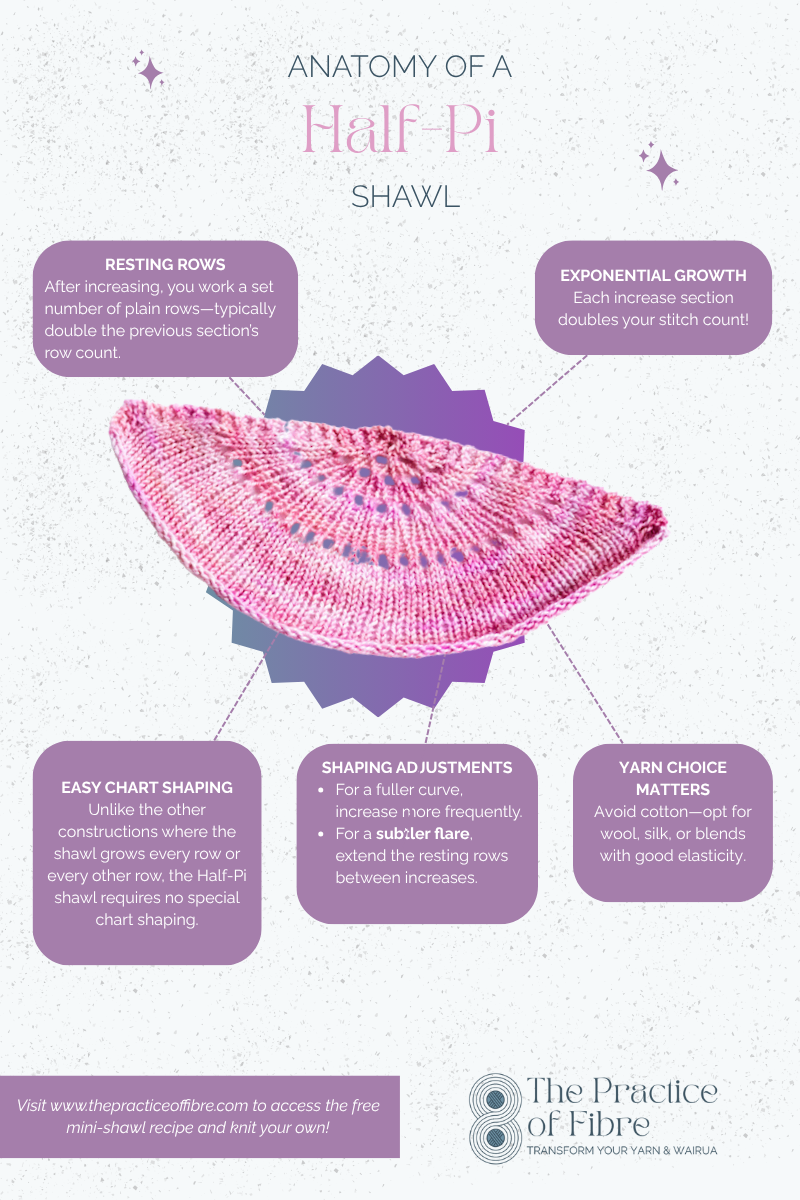Shawl Shapes Series: How to Knit the Half-Pi Shawl
The Half-Circular Shawl: Simple Construction, Stunning Results
This shawl shape is one of the easiest to design because its increases happen at predictable intervals. While it requires some basic math to plan, the construction itself is straightforward—no complex charts needed. The magic happens in the blocking: what looks like a flat piece of knitting transforms into a graceful half-circle thanks to the natural elasticity of knitted fabric.
Understanding the Structure
The half-circular shape emerges from a simple formula:
Exponential Growth: Each increase section doubles your stitch count (e.g., 6 → 12 → 24 → 48 stitches).
Resting Rows: After increasing, you work a set number of plain rows—typically double the previous section’s row count (4, 8, 16, 32 rows, etc.).
Flexible Fabric: Stockinette or lace stitches stretch during blocking to create the curved shape.
Why it works: The increased density of stitches at the outer edges forces the fabric to flare outward, while the center remains more compact, forming the curve.
Shape Instructions
Abbreviations:
CO: Cast On
K: Knit
P: Purl
Pm: Place Marker
Sm: Slip Marker
Yo: Yarn Over
RS: Right Side
WS: Wrong Side
Set-Up
Garter Tab Cast-On:
Cast on 3 stitches, knit 6 rows.
Turn work 90° and pick up 3 stitches along the long edge.
Turn again and pick up 3 stitches from the cast-on edge. (9 stitches total)
Place Markers:
K3, place marker, p3, place marker, k3. (2 markers total)
Shaping the Shawl
(Excluding garter border stitches)
Section 1:
Increase Row: [K1, yo] across body stitches. (6 stitches)
Resting Row: Purl all body stitches.
Work stockinette (or lace) for 4 rows.
Section 2:
Increase Row: [K1, yo] across. (12 stitches)
Resting Row: Purl all.
Work stitch pattern for 8 rows.
Continue doubling stitches and rows (24 sts/16 rows, 48 sts/32 rows, etc.) until the shawl reaches your desired size.
Tips for Success
Yarn & Needles
Use lightweight yarn (fingering or lace weight) with larger needles (US 4–6) for stretch.
Avoid cotton—opt for wool, silk, or blends with good elasticity.
Shaping Adjustments
For a fuller curve, increase more frequently.
For a subtler flare, extend the resting rows between increases.
Experiment with alternate cast-ons (e.g., yarn-over pickups for extra stretch).
Blocking
Edges: Stretch aggressively to open lace or highlight the curve.
Center Top: Block gently in a straight line (use wires if available).
Bind-Off: Use a loose, stretchy method (e.g., Icelandic or sewn bind-off).




